| East Coast Light I | |
|---|---|
 | |
| Artist | Sean Scully |
| Year | 1973 |
| Medium | oil on canvas |
| Dimensions | 216 cm× 254 cm(85 in× 100 in) |
| Location | Crawford Gallery, Cork |
East Coast Light I is an abstract painting by Irish-born American artist Sean Scully, from 1973.
| East Coast Light I | |
|---|---|
 | |
| Artist | Sean Scully |
| Year | 1973 |
| Medium | oil on canvas |
| Dimensions | 216 cm× 254 cm(85 in× 100 in) |
| Location | Crawford Gallery, Cork |
East Coast Light I is an abstract painting by Irish-born American artist Sean Scully, from 1973.
The painting is an oil on canvas with dimensions of 216 x 254 centimeters. It is in the collection of the Crawford Gallery, in Cork. [1]
It is an early work, exhibited in 1973 in Cork. It is a hard-edged abstraction style painting. [2]

Jack Butler Yeats RHA was an Irish artist and Olympic medalist. W. B. Yeats was his brother.
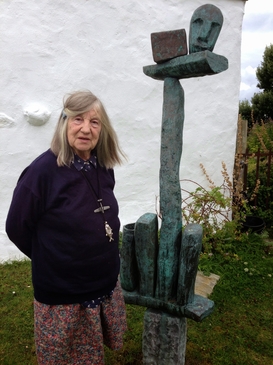
Camille Souter was a British-born Irish abstract and landscape artist. She lived and worked on Achill Island and was a Saoi of Aosdána.
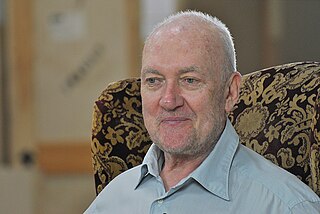
Sean Scully is an Irish-born American-based artist working as a painter, printmaker, sculptor and photographer. His work is held in museum collections worldwide and he has twice been named a Turner Prize nominee. Moving from London to New York in 1975, Scully helped lead the transition from Minimalism to Emotional abstraction in painting, abandoning the reduced vocabulary of Minimalism in favor of a return to metaphor and spirituality in art.
Events from the year 1952 in Ireland.

The history of Irish art starts around 3200 BC with Neolithic stone carvings at the Newgrange megalithic tomb, part of the Brú na Bóinne complex which still stands today, County Meath. In early-Bronze Age Ireland there is evidence of Beaker culture and a widespread metalworking. Trade-links with Britain and Northern Europe introduced La Tène culture and Celtic art to Ireland by about 300 BC, but while these styles later changed or disappeared under the Roman subjugation, Ireland was left alone to develop Celtic designs: notably Celtic crosses, spiral designs, and the intricate interlaced patterns of Celtic knotwork.
Paul Henry was an Irish artist noted for depicting the West of Ireland landscape in a spare Post-Impressionist style.
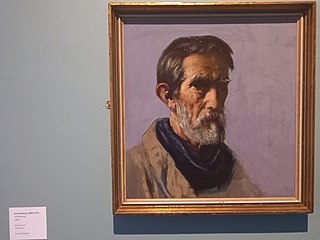
Seán Keating was an Irish romantic-realist painter who painted some iconic images of the Irish War of Independence and of the early industrialization of Ireland. He spent two weeks or so each year during the late summer on the Aran Islands and his many portraits of island people depicted them as rugged heroic figures.
Henry Albert Hartland was an Irish artist known for his watercolours and landscape paintings.

Brian Smyth is an Irish figurative painter. Born in Cork, Smyth studied art at the Crawford College of Art and Design in Cork, where he specialised in painting and graduated with an honours degree in art and design in 1995. Subsidiary subjects included print, video and photography.
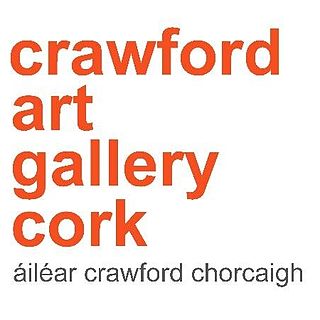
The Crawford Art Gallery is a public art gallery and museum in the city of Cork, Ireland. Known informally as the Crawford, it was designated a 'National Cultural Institution' in 2006. It is "dedicated to the visual arts, both historic and contemporary", and welcomed 265,438 visitors in 2019. The gallery is named after William Horatio Crawford.
Ronald Ossory Dunlop was an Irish writer and painter in oil of landscapes, seascapes, figure studies, portraits and still life.
Nathaniel Grogan (1740–1807) was an Irish painter from Cork, and one of the most important Irish genre painters of the late 18th century.
Kate Dobbin RHA (1868–1955) was a British watercolourist who specialised in impressionistic watercolours of Irish country scenes and still-lives of flowers.
John Butts was an Irish landscape painter, specialising in woodland and river scenes.
Deborah Brown was a Northern Irish sculptor. She is well known in Ireland for her pioneering exploration of the medium of fibre glass in the 1960s and established herself as one of the country's leading sculptors, achieving extensive international acclaim.
Declan Long is an Irish art critic and lecturer specialising in contemporary art made in ‘Post-Troubles’ Northern Ireland.
Bridget Flannery is an Irish painter working in abstract painting. Mark Ewart says: "She is not a landscape painter in the strictest sense of the word," but both he and fellow critic Aidan Dunne say that her work is influenced by landscapes or seascapes. She studied at the Crawford College of Art, and Design Cork. She has exhibited across Ireland and internationally. Her work was included in the exhibition "Cork Art Now '85" at the Crawford Municipal Art Gallery and then traveled to the Heineken Gallery in Amsterdam.
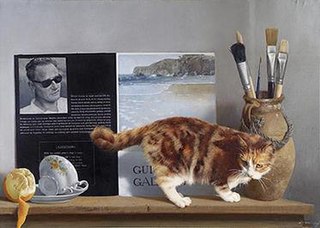
Patrick Anthony Hennessy RHA was an Irish realist painter. He was known for his highly finished still lifes, landscapes and trompe l'oeil paintings. The hallmark of his style was his carefully observed realism and his highly finished surfaces, the result of a virtuoso painting technique. He was brought up in Arbroath by his mother and step-father, his father having been killed during World War One. He attended Dundee School of Art where he met his lifelong companion, the painter Henry (Harry) Robertson Craig. Two of his paintings were accepted in 1939 at the Royal Scottish Academy for their Annual Exhibition. For the next 29 years he lived in Ireland with extended trips abroad. He was elected a member of the Royal Hibernian Academy in 1949. The Hendriks Gallery in Dublin and the Guildhall Galleries in Chicago were the main outlets for his work. In the late 1960s he moved permanently to Tangier and then, after suffering ill health, to the Algarve. He died in London.
Diarmuid Ó Ceallacháin (1915-1993) was an Irish painter known for his landscape and figurative work. He won a number of awards including the Taylor Prize and a diploma and medal from the Academie Francaise. He was teacher of painting at the Crawford School of Art and Design in Cork city from 1940 to 1970.
Gaetano de Gennaro was an Italian-Brazilian artist, sculptor.